 January 2024
Before other greenery's back in the spring, conifers offer a touch of green, fragrance and phytoncides. Make time for some coniferous forest bathing and reap the benefits.
 Cold winters and cool summers caused by Arctic air masses are typical of the coniferous forest. Moisture levels are maintained by summer rains and heavy winter snows.
Did you know that...
... conifers have specific features to survive cold winter months?
Needle-shaped leaves minimize surface area and don't catch the wind in storms. The waxy needle coating retains moisture and helps shed snow. Because conifers can retain needles year-round, they can begin photosynthesis in spring as soon as temperatures are warm enough. The needles also provide important habitat for birds and wildlife.
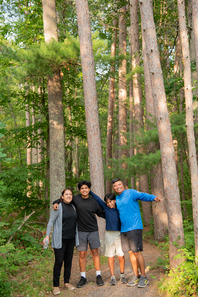
... evergreens are the largest producers of phytoncides?
Phytoncides are biochemicals that plants and trees produce for protection from bacteria, fungi and insects. These biochemicals are released into the air as aerosols that have scientifically shown to have a positive impact on human health, including mental health and immune function.
Evergreen needles have been used for centuries in traditional medicine and are often consumed as a tea, one of the best ways to reap their antioxidant benefits. Remember, only consume foraged goods if you're certain of what you have — some conifer needles can cause stomach irritation if consumed.
|
... the buildup of dropped pine needles supports the understory plant community?
Every two to four years, most conifers shed their needles. Dropped needles trap moisture and insulate the soil. This creates the right conditions for many plants, including Canada mayflower, wild sarsaparilla, large-leaved aster, northern bedstraw, strawberry, blueberry, juneberry, wintergreen, bearberry, beaked hazelnut and chokecherry. Pine forest berries, sap, bark and branches have been central to Anishinaabe and Dakota ways of life.
... 10 of the 53 native tree species of Minnesota are coniferous?
The coniferous forest in Minnesota is found in the northern half of the state, but grades into deciduous forest, then tallgrass aspen parkland in the northwest. Logging, fire, and development have altered the coniferous forest biome in the past 200 years, yet some untouched conifers still exist today.
 Lost 40 SNA owes its old-growth white pine - red pine forest to a surveying error that occurred during the Public Land Survey in 1882. As the story goes, the pines were missed by loggers because surveyors mistakenly mapped the area as Coddington Lake.
 
Her graduate thesis led to a discovery of Minnesota state parks and recreation areas, their land, history, and culture. In her work as an outdoors youth leader, Thia is driven by these learnings and what she was taught as a Hmong child.
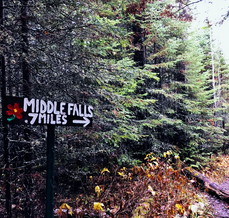
I used to not consider "conservation” or “environmental education” as sciences or career paths, as I couldn't conceive them as separate from my existence. I was taught that the environment was part of my life and cultural practices.
My personal Hmong learning, which might differ from others', has influenced how I connect with nature and places. At birth, I am released into yaj ceeb, the seen world realm, where all natural beings like rocks, trees, and water are living spirits. While I am living on this realm, I know that it is kuv txoj hmoov (my mandate of life), and I have responsibilities to care for all that are here and who will care for me in return. My time here is limited, and how I lead my life here will carry with me as I leave this realm and return to yeeb ceeb (the unseen world/world of ancestors).
|
 I felt joy being within the coniferous forest at Grand Portage State Park, listening to ravens call. The thundering message of the Middle Falls beside me and underneath my feet felt empowering, a reminder that water is life. (This. and above trail photo, courtesy of Thia Xiong.) BELOW: I enjoyed alone time at Glacial Lakes State Park, listening and being embraced by the wind. The park is in the Leaf Hills Moraines or Gaaskibag-wajiwan (Anishinaabe for rustling leaf mountains).
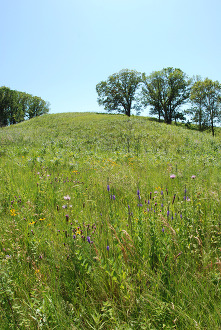
I've been amazed by the similarities I've found between my Hmong culture and Dakota and Anishinaabe cultures, despite our ancestry being worlds apart.
It was in the spirit of learning more about Indigenous cultures that I decided to embark on a journey to visit every Minnesota state park and recreation area. I collected stamps on my Passport Club book, but I was also intentional about learning the cultural stories, land and Indigenous history, as well as talking with park staff. Beyond geographical, my journey was very personal, and I was able to reflect on how narratives nurture relationships to land.
As a queer, BIPOC, female-identifying individual working in the field of conservation, I am well aware of the challenges that come with lack of representation, diversity and narratives on our public lands. I would like to encourage others in minority groups to not let that prevent you from enjoying public lands.
|
 I enjoyed the proximity to the quartzite rock outcrops at Blue Mounds State Park. I walked above the cliff through prairie, looking for cacti, as this is one of the few areas of the state where they grow.
No matter where our journey takes us, the land has always been a wise ancestor, supporting and carrying the weight of our existence. Even where we don't look or sound like others, we can connect with the land, get a sense of place.
No matter where we venture to, I hope we can find the courage to create spaces that nurture our identities, as well as encourage others to share that space with us. When we share space together, we can also share stories, and in this way, build understanding and relationships.
Thia's art
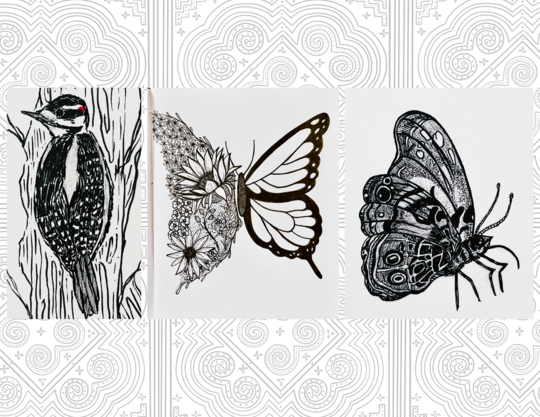 For Thia, nature has always been an inspiration for creativity, "especially smaller things within it, like insects who, though small and fragile, survive and thrive to do much work that goes unnoticed." Nature images, hand-drawn with ink pens; background image, hand-drawn digitally.
I live in an apartment and have been amazed by the birding opportunities in this urban setting. I've seen red-bellied and downy woodpeckers (illustrated), blue jays, and ruby-throated hummingbirds, among others. Birdwatching is a wonderful way to spend my alone time at home.

When not working with youth, I love sitting low in the pollinator garden at Urban Roots so I can understand the world from the perspective of its living beings, like the flowers and monarch butterfly I drew.
I took a hiatus from art and creativity while deciding on career and education paths. Finding that creativity is lost if unused, I set a goal to do one creative thing a day. The third illustration, an American painted lady butterfly, was a result of that process.
The background is a Hmong Paj Ntaub (flower cloth), a traditional story cloth found in tapestry and/or clothing. Typically, designs are inspired by the environment, and include stories, symbols and motifs. My own design shows interconnectedness of the ko taw ntxhw (elephant’s foot) and the qwj (snail). My life is centered in ancestral gifting and reciprocity between the human and the natural worlds. Paj (flower/pinwheel) are scattered throughout, just like in the real world, feeding those above and below the ground. Ntaiv (stairs/steps) represent continuous growth and nurturing in both this realm and beyond.
|
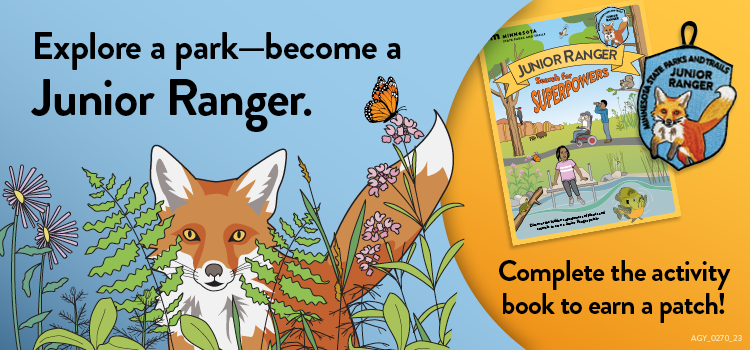

Can you identify conifers based on needles and cones?
Red pine or Norway pine, Minnesota's state tree
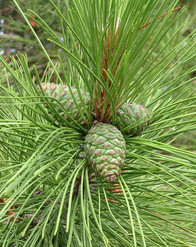
Red pines grow in sandy soil. Needles come in clusters of two. The bark is divided into large reddish-brown plates as it matures, giving the tree its characteristic appearance and its name. Cones are about 2 inches long and ripen in the fall of their second season.
Visit McCarthy Beach and Bear Head Lake state parks in northeast Minnesota, or go northwest to Itasca State Park and the Lost 40 SNA (Scientific and Natural Area), where you can admire the old-growth red and white pine forest. Designated old-growth represents less than one-quarter of 1% of all of Minnesota's forests.
|
Eastern white pine
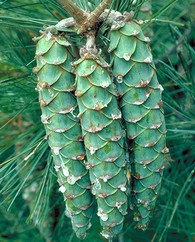
White pine needles grow in bundles of five. The bark of mature white pines is thick, furrowed, and grayish brown. Small (half inch), oblong cones ripen in the fall of the first year, and are borne singly or in large clusters on ends of branches.
Schoolcraft State Park is home to 300-year-old white pines! Visitors at Crow Wing State Park can see white, red and jack pine, all in the same park. Stately white pines frame views of the Rainy River at Franz Jevne State Park, where you can also wander through a mixed forest including jack pine and birch.
|
Jack pine
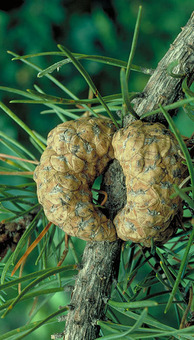
The jack pine is hardy and can thrive on soil too poor for the red or white pine to grow. Jack pine needles are shorter than those of the other pines and come in bundles of two. The bark is dull red-brown, and irregularly divided into small scales. Cones are about 1.5 inches long, often strongly curved and change colors as they mature.
Once home to stands of virgin red and white pine, today, St. Croix State Park is a mix of natural communities, including the imperiled oak savanna and a unique plant community called the jack pine barrens. Zippel Bay State Park is located in a jack pine, aspen and birch setting along a 2-mile sand beach shoreline of Lake of the Woods. Badoura Jack Pine Woodland SNA is one of the largest examples of a mature jack pine woodland community represented on an SNA.
|
White cedar
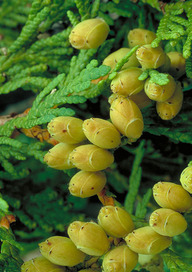
Growing in dense, pure stands, white cedar can form impenetrable thickets. Unlike other conifers that grow mostly in northern Minnesota, white cedar can grow as far south as Winona County. The aromatic leaves are green to yellowish green, scale like, and arranged to make the small branches flat.
George Crosby Manitou State Park contains a 166-acre northern hardwood forest and a 196-acre upland white cedar forest. Ancient trees grow at this park — some yellow birch trees are 400 years old, while white cedar trees can reach 300 years and sugar maple 200 years.
|
Red cedar (juniper)
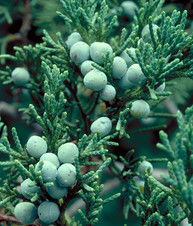
The red cedar grows in the southern half of the state, typically on river bluffs where few other trees can grow. Its bark is red-brown and peels. Leaves are shaped like strings of soft, flat scales. Cones look like blueberries and make food for ruffed grouse, rabbits and coyotes.
Look for red cedar along the banks of the Minnesota River. Return in the summer to watch them from a boat.
|
Eastern hemlock
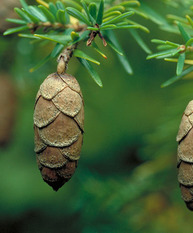
Hemlock needles are flat but blunt, scattered and borne in many rows, usually twisted into a two-rank arrangement. Hemlocks are listed as endangered in Minnesota and are considered one of the state's most imperiled trees.
Keep an eye our for eastern hemlocks as you roll on the Willard Munger State Trail, at Jay Cooke State Park and by the St. Louis River. This tree is also protected in designated sanctuary areas.
|
Balsam fir
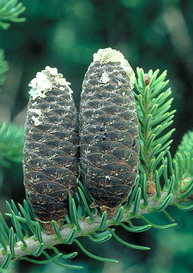
Balsam fir are fragrant and have spreading branches that form a symmetrical, slender pyramid. Needles are flat with a rounded point, dark green above and silvery white beneath. Cones grow upright on branches, and are 2 to 4 inches long, purple and oblong.
Balsam fir grows in three native plant communities in Northern Minnesota (Northern mesic mixed forest, northern mesic hardwood forest, and northern poor dry-mesic mixed woodland.) But it can also be found as far south as the Driftless Area, a relic from historically colder periods. Some of these firs are protected within a sanctuary area.
|
Black spruce
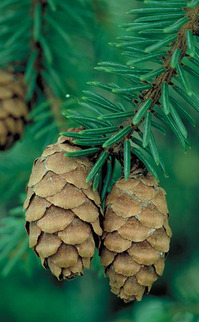
A common marsh or bog species, this tree's growth is extremely slow. Trees over 100 years old have measured at only 2 inches in diameter. Spruce needlers are bluish green, short (about a half inch) and four-sided. Cones are oval shaped, between a half inch to 1.5 inches. They change from purple to brown as they mature.
Lake Bemidji State Park contains a conifer bog with some of Minnesota's most unusual plants and animals. Scenic State Park was established to protect virgin pines along the shores of Coon-Sandwick Lake. Take the Fire Tower Trail to hike through old-growth pine and black spruce forest.
Collect black spruce cones in northern Minnesota state forests. The Minnesota DNR State Forest nursery buys them for reforestation.
|
White spruce
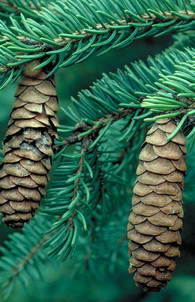
White spruce thrives on dry soils associated with pine, and on moist soils and in swamps. The needles are four-sided, pale blue when young, and dark bluish green when mature. This is one conifer that does not have a pleasant smell. Some say it smells like cat urine. Cones are slender and about 2 inches long, with round scales, and drop in the winter after opening and shedding seeds.
Wood from the white spruce is light and strong, and is used for many applications, including paper... and canoe paddles!
The largest white spruce is located on public land in Koochiching County and measures 126’ tall and 133” around.
|
Tamarack
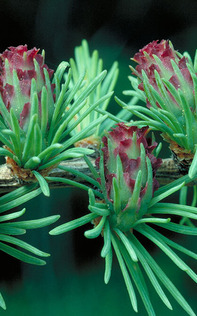
The tamarack tree is a coniferous tree that is not evergreen; it is both coniferous and deciduous. Its flat, soft needles grow in clusters and are bright green in spring and turn orange in fall, before dropping.
Tamaracks are the only coniferous trees in Minnesota to shed all their needles at once. This adaptation allows them to save resources since they often grow in locations too cold for winter photosynthesis. Additionally, losing needles allows tamaracks to be more resilient to defoliating insects and fires.
Walk the boardwalk at Big Bog State Recreation Area to see black spruce, tamarack and other boreal forest trees. At Savanna Portage State Park, old-growth hardwoods and tamarack peat bogs provide diversity to the northern hardwoods.
The impact of climate change on tamaracks.
|
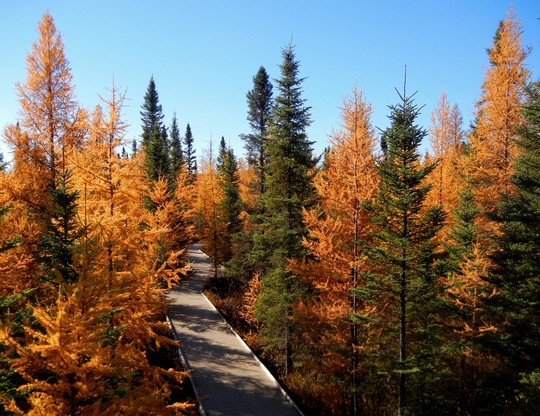
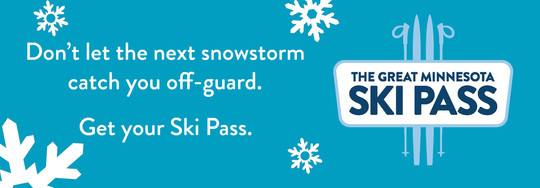
|